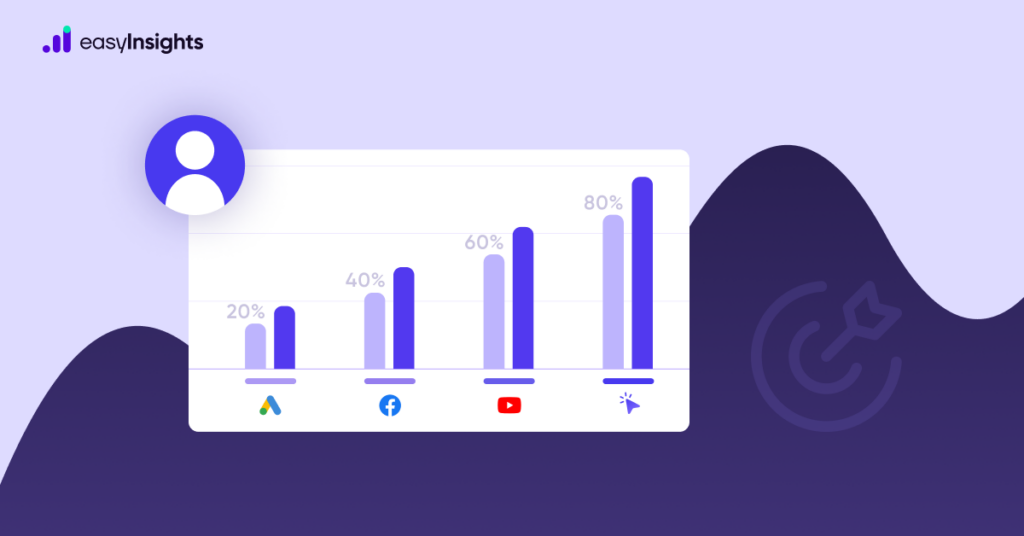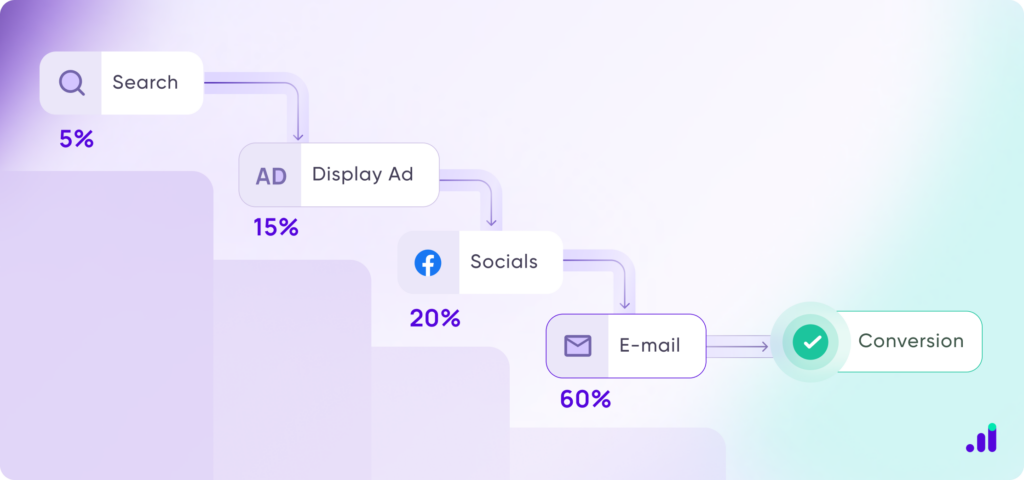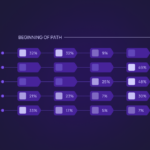
The customer journey is rarely linear, often involving multiple channels. Time Decay Attribution model operates on the principle that not all interactions are equal. It recognizes the dynamic nature of consumer interactions and their varying influence on decision-making. By understanding when and how to apply this model, marketers to allocate resources effectively, optimize campaigns, and achieve more effective outcomes. Accurately attributing conversions to the right interactions is crucial for maximizing ROI.
Jump ahead to:
What is the Time Decay Attribution Model?
The Time Decay Attribution Model helps understand how different marketing channels contribute to customer conversions. By prioritizing recent interactions, it offers a nuanced approach to the customer journey. Unlike static models that assign equal weight to all interactions or prioritize only the first or last interaction, the Time Decay model introduces a time-based factor. This factor acknowledges that interactions closer to the conversion event often carry greater significance.

Consider a customer who is in the market for a new smartphone. Here’s how their journey might unfold:
- Initial Google Search: The customer starts with a Google search to explore various smartphone options, sparking initial interest.
- Display Ad While Browsing: While browsing the web, they see a display ad for the smartphone, reinforcing their interest.
- Facebook Ad: Later, the customer encounters an ad for the same smartphone on Facebook, further engaging them.
- Email Offer: Finally, the customer receives an email from the retailer with a promotional offer, prompting them to click through and make the purchase.
In this scenario, the Time Decay attribution model would allocate more credit to interactions closer to the purchase time, such as the email offer, while still giving partial credit to earlier interactions like the initial Google search and display ad. This approach acknowledges the cumulative influence of each touchpoint while emphasizing those that directly contributed to the conversion.
Additional read: Everything You Need To Know About Marketing Attribution Models
Advantages of the Time Decay Attribution Model
The Time Decay Attribution Model provides several benefits for marketers by emphasizing time as a crucial factor. This model is particularly useful when it’s necessary to focus on interactions that occur closer to the purchase time of purchase time to optimize marketing efforts. Here are some key benefits
- Reflects Realistic Consumer Behavior: By assigning more credit to interactions closer in time to the conversion event, the Time Decay model aligns with how consumers typically make purchasing decisions. It accurately captures the diminishing influence of older interactions and provides a more realistic portrayal of the customer journey.
- Dynamic and Adaptive: This model accounts for the changing impact of interactions over time, allowing marketers to adapt their strategies in response to evolving consumer behavior. It provides a dynamic framework for optimizing marketing efforts based on current trends and consumer preferences.
- Encourages Timely Optimization: Since recent interactions receive higher credit, the Time Decay model incentivizes marketers to focus on channels and campaigns that are currently driving conversions. It encourages timely optimization of marketing strategies to capitalize on emerging opportunities and maximize ROI.
- Balances Short-term and Long-term Effects: While emphasizing the importance of recent interactions, the Time Decay model still acknowledges the role of earlier interactions in the customer journey. It strikes a balance between short-term gains and long-term brand building, ensuring that marketers consider both immediate results and the broader impact on brand awareness and loyalty.
Disadvantages of the Time Decay Attribution Model
While the Time Decay Attribution Model offers many benefits, it also has some limitations. These disadvantages are important to consider when deciding whether to implement this model in your marketing strategy:
- Complex Implementation: The model requires more sophisticated tracking and analysis than simpler models, which can be challenging for teams with limited resources.
- Potential Overemphasis: There is a risk of overvaluing recent interactions at the expense of understanding the full journey and the importance of initial interactions.
- May Not Fit All Campaigns: This model might need to provide more accurate insights for long-term campaigns where earlier interactions are critical for building awareness and interest.
Best Practices for Using the Time Decay Attribution Model
To effectively utilize the Time Decay Attribution Model, marketers should follow best practices that maximize the model’s benefits while mitigating its drawbacks:
- Understand the Customer Journey: Map out the typical customer journey to identify key interactions and stages where interactions occur. This helps in setting up the Time Decay model effectively to capture the impact of recent interactions accurately.
- Combine with Other Models: Use the Time Decay model alongside other attribution models like Linear or position-based attribution to gain more comprehensive insights.
- Analyze Conversion Paths: Regularly review the entire conversion path to understand the influence of both recent and earlier interactions.
- Integrate Across Channels: Ensure that your Time Decay model integrates data from all marketing channels, including online and offline interactions. A holistic view of the customer journey across all touchpoints will provide more accurate attribution insights.
- Adjust Marketing Strategies: Use the insights gained from the Time Decay model to refine and optimize your marketing strategies. By focusing on the touchpoints that drive conversions, you can improve the efficiency and effectiveness of your marketing efforts.
When to Use the Time Decay Attribution Model
The Time Decay Attribution Model is particularly useful in certain scenarios. Here’s when you should consider using it:
- Sales Cycles with Time-Sensitive Actions: If your business runs promotions or limited-time offers, the Time Decay model emphasizes interactions closer to the conversion event. For example, during a holiday sale, ads and emails sent in the days leading up to the conversion are likely more influential than those sent weeks earlier.
- Adjusting to Consumer Behavior Changes: In rapidly changing markets, the model quickly adapts by giving more weight to recent interactions, reflecting current trends and preferences. For instance, during a new product launch, the model can highlight the effectiveness of recent marketing efforts tailored to promote the launch.
- High-Value Conversion Events: For high-value conversions, understanding recent influences is crucial. The Time Decay model prioritizes recent interactions that may have had a stronger persuasive effect.
Additional Read: Third-Party Cookies Loss & its Impact on Marketing
To Conclude
The Time Decay Attribution Model is an effective tool for understanding the dynamic influence of different interactions within the customer journey. By emphasizing recent interactions, it provides valuable insights into the most impactful touchpoints, allowing marketers to optimize their campaigns accordingly. However, it is essential to use this model in conjunction with other attribution methods, analyze the full conversion path, and continuously monitor and adjust strategies for a comprehensive understanding of the customer journey.
The time decay attribution model highlights recent interactions’ dynamic influence, guiding agile campaign optimization. EasyInsights complements this by leveraging server-side tracking to gather accurate, real-time data. By enabling data enrichment and seamless data activation, EasyInsights empowers marketers to adapt strategies swiftly. Uncover how EasyInsights optimizes attribution with advanced insights and actionable analytics for sustained marketing performance.
To check out EasyInsights in action, book a demo today!
Additional read: When to Use Last-Click Attribution in Marketing








